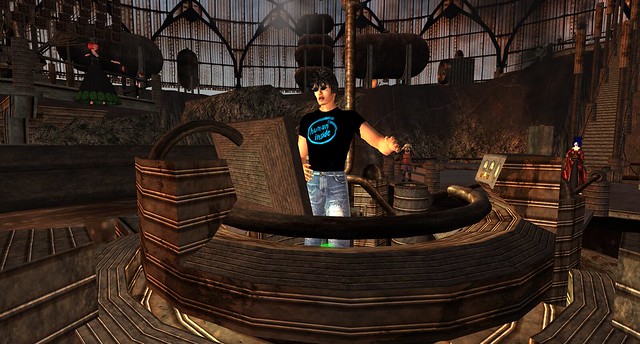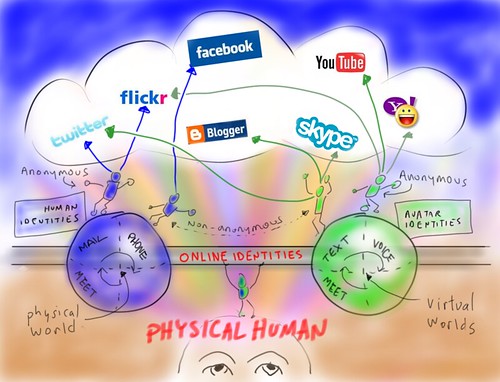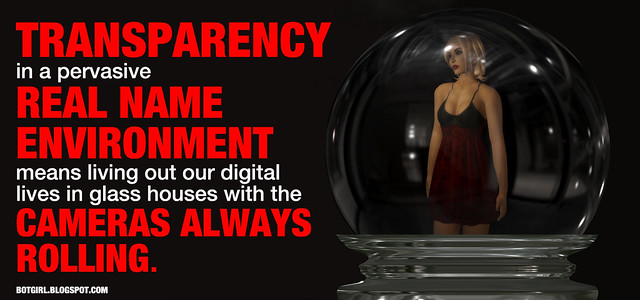My human counterpart gave a presentation on micro-storytelling a few months ago at the 2012 Virtual Worlds Best Practices in Education Conference. Since it now looks like videos from the conference won't be posted, I decided to publish a transcript of the presentation here, using the speaker's notes as reference. Since it's in the neighborhood of 3000 words, I'm going to post it in a few sections over the course of a week:
 |
| fourworlds speaking at the VWBPE Conference (Image by Crap Mariner) |
I'm happy to be back at the VWBPE conference. Last year, Botgirl Questi and I did a performance piece on virtual identity in front of a few hundred people. Apparently she’s a much better draw. This year it’s just me and I’m here to talk about micro-storytelling. On the surface, micro-storytelling seems like a topic that is only marginally connected to either virtual wolds or best practices in education. But even though "micro" is the antithesis of “Epic!” (the theme of the conference), I think it’s a good match for a number of reasons.
 |
| Transworld Identity |
Social networks, media sharing sites and blogs are no longer just a peripheral part of virtual world culture, community and relationships. They have become powerful mediums that both reflect and shape inworld culture. Even if you spend hours a day in a virtual world, you probably interact with only a few dozen people there on a regular basis. Through the use of work computers and net-connected phones which don't have access to Second Life, we’re hanging out in virtual social space 24/7 with thousands of our peers.
 |
| Visual Tweet with content from Second Life |
Small is beautiful
I use the word micro-storytelling pretty loosely, but essentially it’s about applying creativity within very constrained spaces. For the purposes of the talk today I’m referring mainly to:
- Social network posts
- 100 Word Stories
- Captioned images
- Videos of less than three minutes in length
 Although I’m speaking mostly as an amateur enthusiast, this topic also hits home in my professional life. In my day job, I’m one of the principals in a consulting company that does agile software development for large enterprises. My current job title is “Geek Interpreter Guy.” That’s a fun way of saying that I help techies and business people create communication their counterparts can understand.
Although I’m speaking mostly as an amateur enthusiast, this topic also hits home in my professional life. In my day job, I’m one of the principals in a consulting company that does agile software development for large enterprises. My current job title is “Geek Interpreter Guy.” That’s a fun way of saying that I help techies and business people create communication their counterparts can understand.One main challenge is that experts have a hard time seeing the forest for the trees. (I like to joke that it’s because all the trees have been cut down to make the paper used to print fifty page whitepapers and thousand bullet point presentations.) But the real problem is that although specialists know all of the facts in excruciating detail, they often have no clue about how to contextualize the details through a comprehensible story.
My loose definition of “story” includes not just the narrative of events, but any communication that delivers meaning. I see the micro-story format as a great reality test for even the most critical communication. The type of fact-filled ignorance that hides in a 10,000 word report or a 50 slide presentation can usually be exposed by challenging ourselves to articulate the main idea in a 140 character tweet.
Part 2 of this series will cover these 5 types of micro-story:
- Narrative
- Parody
- Aphorism
- Themed
- Visual

No comments:
Post a Comment